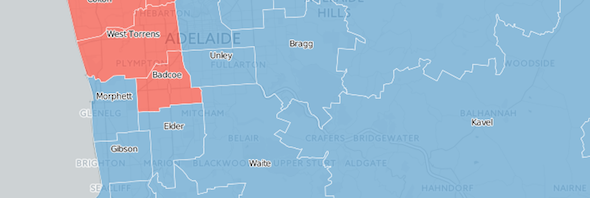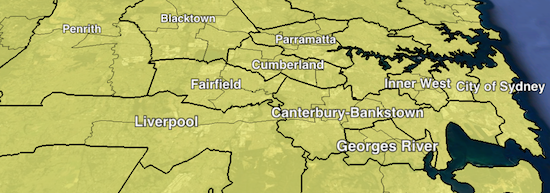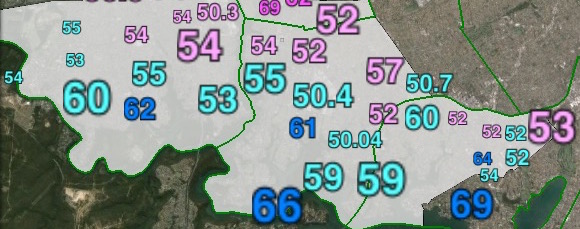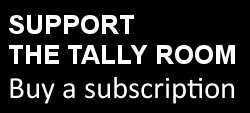I’ve recently completed two new maps for download and use: the (kind of) final boundaries for the 2018 South Australian state election, and draft boundaries for the Tasmanian upper house.
South Australia’s state redistribution was overshadowed by the federal election last year. A final set of boundaries was released late last year, with some significant changes to the draft boundaries in southern Adelaide, but these boundaries are stuck pending a lawsuit by the SA Labor Party. Both the first draft and final draft can be downloaded from the maps page, and the map is embedded here.
I’ve also completed the draft boundaries for the Tasmanian Legislative Council. The Tasmanian upper house consists of fifteen single-member electorates, but its members are elected in a very odd way: only 2-3 seats are elected each year, with members serving a six year term. Boundaries are redistributed roughly once a decade, with the sitting members assigned to finish their term representing a new seat.
There have been some major changes to the boundaries along the east coast of Tasmania. The three Launceston-area seats have remained largely the same, as have the four Hobart-area seats and the two rural seats to the west of Hobart. The west coast seat of Murchison has undergone minor changes.
The east coast seat of Apsley has been chopped up, while the seat of Rumney in the south-eastern corner of the state has been pulled in closer to Hobart, losing Sorell and the Tasman peninsula. A new seat of Prosser stretches halfway up the east coast from the Tasman peninsula to Swansea, while the remainder of Apsley has been moved into a new seat of McIntyre.
The seat of Western Tiers has been chopped up, with the north-western seats of Montgomery and Mersey expanding south and the south-western seat of Derwent expanding north. The remainder of Western Tiers has joined the remainder of Apsley as McIntyre, a strangely-shaped seat curving around Launceston, stretching from Cradle Mountain to Flinders Island.
I would expect the final boundaries for the Tasmanian upper house to be determined later this year, and the new boundaries will be used for the first time in 2018.
 While we were all recovering from the federal election, South Australia was undergoing a redrawing of its state electoral map for the 2018 state election. The draft electoral map was released in mid-August, and I blogged about the
While we were all recovering from the federal election, South Australia was undergoing a redrawing of its state electoral map for the 2018 state election. The draft electoral map was released in mid-August, and I blogged about the 
 As a further taste of the seat guides being posted now on the Tally Room (53 and counting), I thought I’d run through another three interesting seats. Today these three seats are all seats with above-average Greens votes, but also with a wide variation in the Greens vote across the seat.
As a further taste of the seat guides being posted now on the Tally Room (53 and counting), I thought I’d run through another three interesting seats. Today these three seats are all seats with above-average Greens votes, but also with a wide variation in the Greens vote across the seat.
